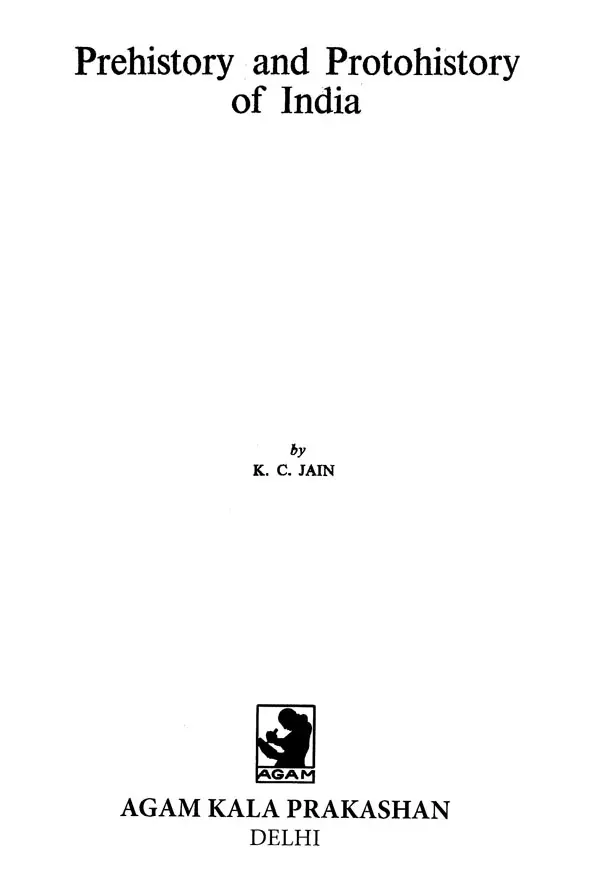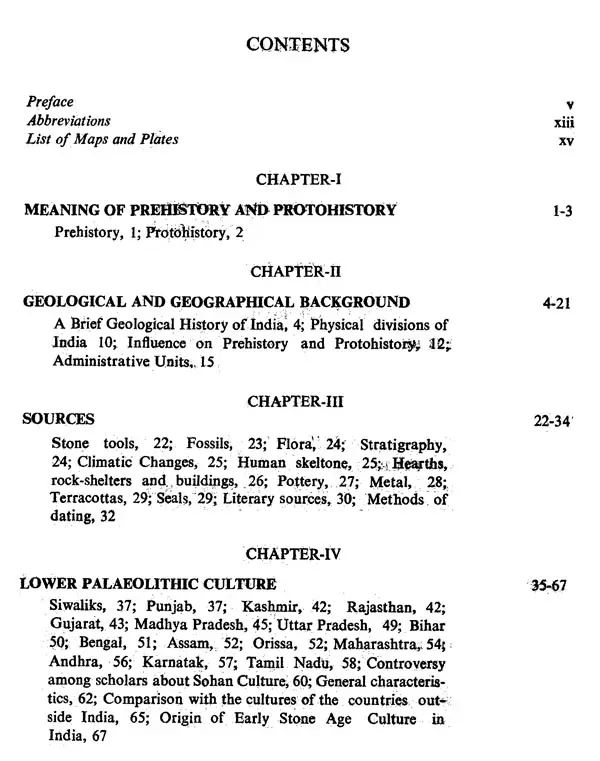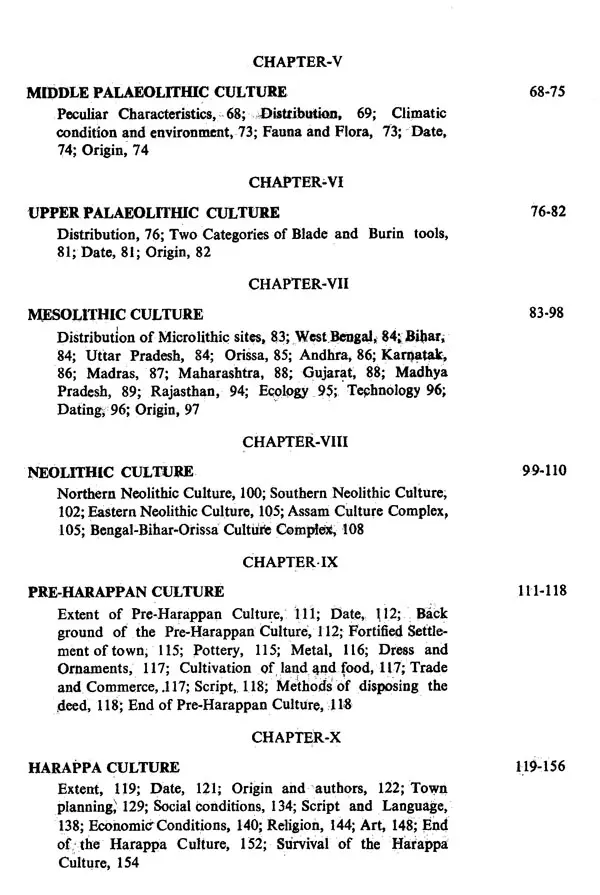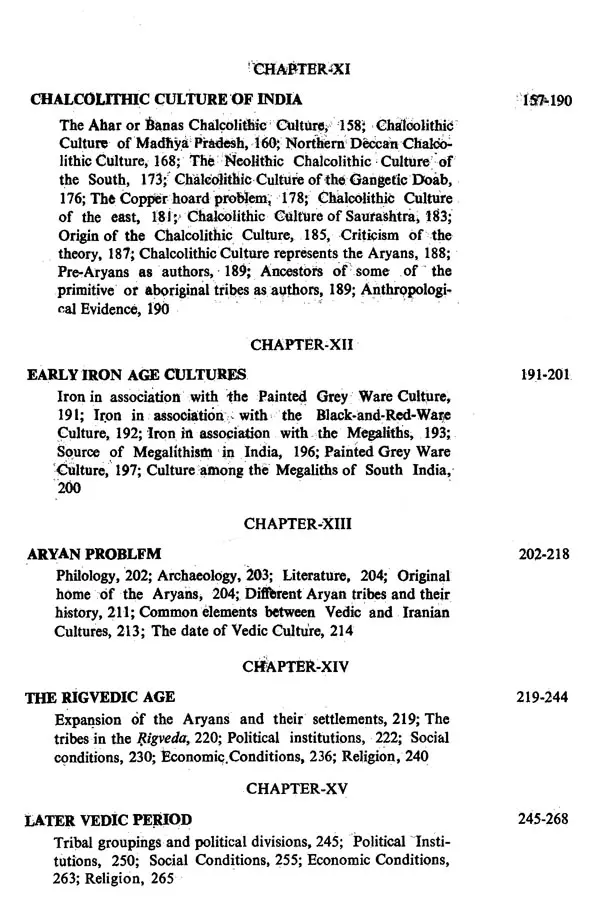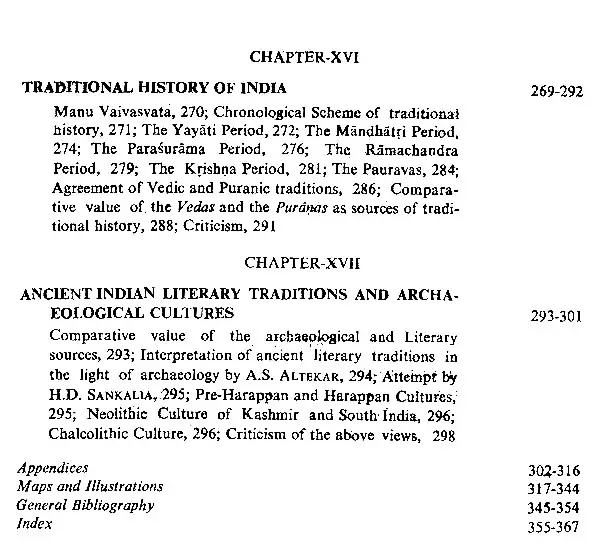
Prehistory and Protohistory of India
Book Specification
| Item Code: | UAM244 |
| Author: | K. C. Jain |
| Publisher: | Agam Kala Prakashan, Delhi |
| Language: | English |
| Edition: | 2019 |
| ISBN: | 9788173201912 |
| Pages: | 387 (Throughout B/W Illustrations with Maps) |
| Cover: | HARDCOVER |
| Other Details | 11.50 X 8.50 inch |
| Weight | 1.25 kg |
Book Description
The history of any country commences from the time when its written records are available. In India, generally the earliest deciphered records are of Asoka who lived in the third century B.C. It is reasonable to hold that the origin and development of the script of these inscriptions in this form probably took about three hundred years. Hence the history of India in a scientific sense is known to have started from the sixth century B.C. This was the time of Buddha and Mahavira, and the beginning of the organized states in Northern India.
This book gives an account of the evolution and growth of cultures from the times when man settled in this country ending with the sixth century B.C. Formerly, this whole period up to the sixth century .c. was considered to be a dark period. Recent efforts made by scholars from time to time have thrown light on this period. Tools and implements made of stone, bone or metal, fossils, potsherds, etc, discovered at different archaeological sites give a continuous idea of the stages of the evolution and growth of Indian Culture. Besides, some scholars have critically studied the Vedas and examined the traditions embodied in the epics and the Puranas in order to reconstruct the history of this period.
There are clear stages in the making of the Prehistory and Proto history of India. The first of these stages was of discoveries of antiquities from the surface of the earth, their collection, classification and cataloguing. Excavations were conducted on important archaeological sites, and reports of most sites were published. Finally, there was constructive utilisation of this type of material for compiling Prehistory and Protohistory of India.
The first systematic investigation for the study of Prehistory started in 1863 when ROBERT BRUCE FOOTE made a sensational discovery by unearthing a palaco lithic tool from a laterite pit at Pallavaram near Madras. Between 1863 and 1904, this explorer located as many as 459 prehistoric sites in Peninsular India. The first brief essay on chronology of prehistoric remains' was published in Foote's catalogue of the collection in the Madras museum (1901), and subsequently a more elaborate account was also made available in his posthumous work of 1916. In 1866, V. BALL also collected several tools of Paleolithic types in Bengal and Orissa. In 1865, WYNNE found a chipped agate flake in association with fossils in the Upper Godavari; and in 1873, HACKETT recovered a hand-axe under similar circumstances in the Narmada deposits of the Middle Pleistocene Age. Between 1930 and 1932, M.C. BURKITT and L.A. CAMMIADE respectively published two articles which laid the foundation of a systematic study of Prehistory in India. In 1932, an interesting implement-bearing section was discovered by K.R.U. TODD at Kandivli (Bombay), and he claimed to establish a clear succession of different types of stone tools such as hand-axes, choppers and scrapers, and microliths of scientific investigation was thus laid in the science of Prehistory in India.
In 1935, the Yale-Cambridge Expedition led by H.DE. TERRA and TT. PATERSON carried out systematic investigation on the subject of Ice Age and associated human cultures in Kashmir and Jammu territories, north-western Punjab, Sind, the Narmada Valley, and Madras by concerted methods of Geology. Paleontology and Prehistoric archaeology. Both H.DE. TERRA and T.T. PATERSON have tried to prove that there occurred four glacial and three Inter Glacial Ages in Kashmir.
Recently, enormous work on Prehistoric archaeology was done by the Archaeological Survey of India. Stone Age sites were explored and excavated in different parts of India such as Gujarat, Madras, Uttar Pradesh, Rajasthan, Madhya Pradesh, Orissa and Bengal. Those, who have been credited with such work, are V.D. KRISHNASH KRISHNASWAMI, B.B. LAL, B.K. THAPAR, R.V. JOSHI, M.N. DESHPANDE, the Sabarmati K.V. SOUNDAR RAJAN, N.R. BANERJEE and others. V.D. KRISHNASWAMI's main work was, however, in the coastal plain of Madras, but he explored Valley in Gujarat where hand-axes and pebble-choppers were recovered from lateralized gravel beds. He also visited the Singrauli basin in Mirzapur District of Uttar Pradesh. He wrote the articles on Stone Age India' and 'the Neolithic Pattern of India'. In 1955, B.B. LAL found Sohan type of tools in Beas and Banganga Valleys in, the Kangra District. His work is important as he relied extensively on river terraces for dating his findings. The Mesolithic site of Birbhanpur near the Durgapur Railway on the bank of the Damodar river in the Burdwan District, West Bengal, was also discovered and excavated by B.B. LAL. R.V. JOSHI has published a useful report on Paleolithic sites in Damoh, Sagar and Hoshangabad in Madhya Pradesh. He has also surveyed the Malaprabha basin and noted some twenty one sites. K.V. SOUNDAR RAJAN has studied the stone tools at the sites of Nagarjunakonda and its neighborhood.
Besides the Archaeological Survey of India, much important work was done by the educational institutions. In 1940, the Anthropological Department of the Calcutta University investigated the Paleolithic site of Mayurbhanj in Orissa. There the valley of the Burhabalang river and its territories yielded a large collection of tools such as choppers, handaxes, cleavers and scrapers. D. SEN and research students of this Department have also worked on the pebbles and flake tools of Sirsa Valley in East Punjab, in the Narmada Valley in Madhya Pradesh and in Midnapur and Bankura in West Bengal.
